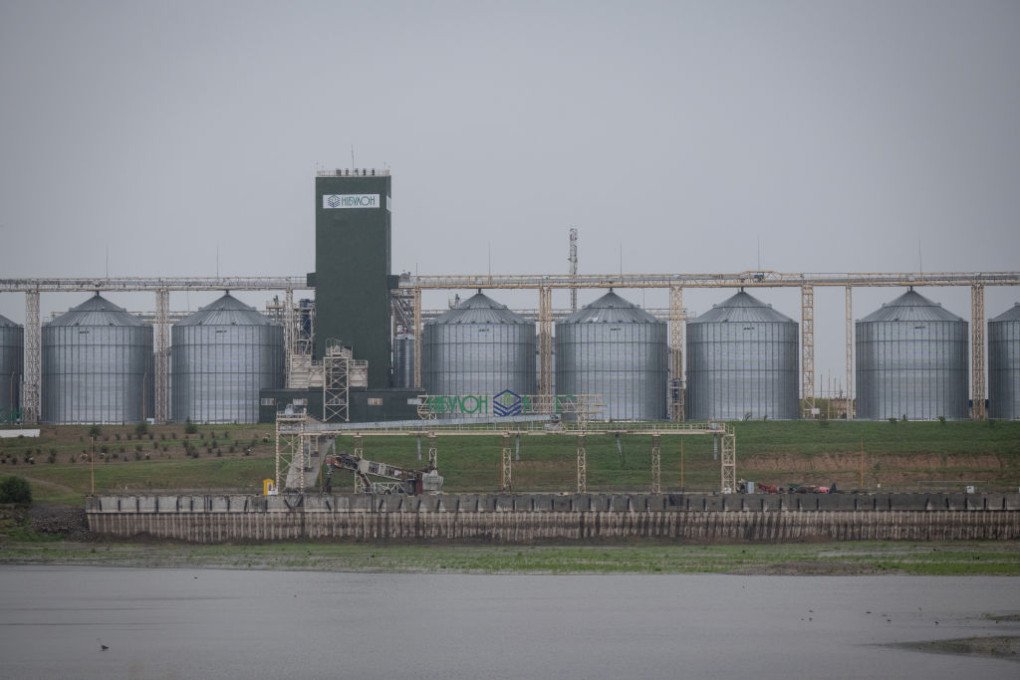- Category
- Business
Ukraine Is One of the World's Largest Food Exporters. A Key Element: Access to the Black Sea

Ukraine ranks among the top countries globally for agricultural exports and is a crucial part of global food security. To ensure timely exports and uninterrupted food supply to dozens of countries worldwide, safe passage through the Black Sea is essential.
Ukrainian agricultural products are in high demand globally. Ukraine is the 5th largest wheat exporter in the world, behind only Russia, Australia, Canada, and the United States. It is the largest wheat exporter in Europe, holding between 5% and 9% of the global wheat export market. The main obstacle to increasing its export share is the ongoing war in Ukraine.
Due to the full-scale invasion, around 20–25% of Ukrainian land is either mined or still unsafe after liberation. A portion of this land includes agricultural fields that have not been used for two years because of the risk of landmines—a common reality for Ukrainian farmers. Other territories are either occupied or near active conflict zones, making it too dangerous for farmers to work.
This situation impacts the global food market. Ukraine is not just a large exporter—for some crops, it is among the top exporters and plays a direct role in providing affordable food to countries that rely on these supplies.
Ukraine’s agricultural exports
Ukraine ranks in the top 10 globally for exports of at least seven key crops:
Corn – 4th
Wheat – 5th
Sunflower Seeds – 9th
Barley – 3rd
Sunflower oil – 1st
Sunflower meal – 1st
Rapeseed – 3rd
For some of these crops, Ukraine is not only a top exporter but also a critical supplier to the global market, essential for stable food supply chains. For example:
Sunflower oil – 46% of global exports
Sunflower meal – 54% of global exports
Rapeseed – 20% of global exports
Major importers of Ukrainian food include China, India, Turkey, Egypt, Pakistan, and Saudi Arabia. Ukraine also launched the Grain from Ukraine initiative, under which large volumes of food are delivered to countries facing acute hunger. Since its launch, and with support from the UN, Ukraine has sent 170,000 tons of wheat to Ethiopia, Somalia, Yemen, and Kenya. The program is expected to expand to Nigeria, Sudan, Mozambique/Malawi, Madagascar, Djibouti, Liberia, Mauritania, Lebanon, and other nations.
According to the World Population Review, Ukraine is the largest food exporter in Europe, surpassing France.
Export revenue
Agriculture is Ukraine’s largest export sector, accounting for about half of the country’s income. In March 2025 alone, Ukraine exported 5.4 million tons of agricultural products worth $2.1 billion.

Top 5 export categories:
Corn – $514 million
Sunflower oil – $503 million
Wheat – $254 million
Soybeans – $150 million
Poultry meat – $95 million
Overall, Ukraine’s total exports in March 2025 amounted to $3.6 billion, 58% of which were food products. For Ukraine, this is a matter of survival: all export revenues support the country’s defense, making export an essential component in the war effort against Russia.
A vital channel for these exports is the Black Sea. In 2024, Ukraine exported nearly 100 million tons of cargo by sea—over 60 million tons of it was food. Sea transport is the fastest and most cost-effective way to deliver products to clients, which is why the operation of the Maritime Corridor—secured by the Ukrainian military and its partners—is so critical.
At the same time, Russia continues to attack Ukrainian ports in Odesa and along the Danube River. It targets grain storage facilities, ports, and even vessels, directly impacting Ukraine’s export capabilities. These are not just attempts to block Ukrainian exports but also efforts to undermine global food security. Despite this, no sanctions have been imposed on Russia’s food sector.
Russia has also ignored peace negotiations concerning the Black Sea and continues to strike Ukrainian port infrastructure.



-fb407963f5e416442368d4f34da2e84d.png)
-5a646718cae8d76c7457deaec7ce37b2.jpg)
